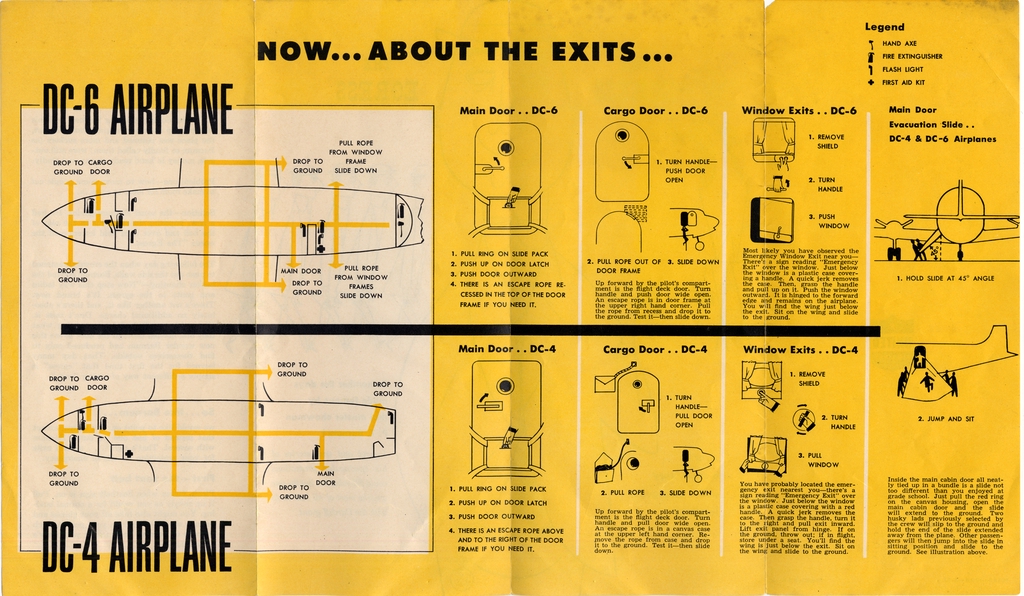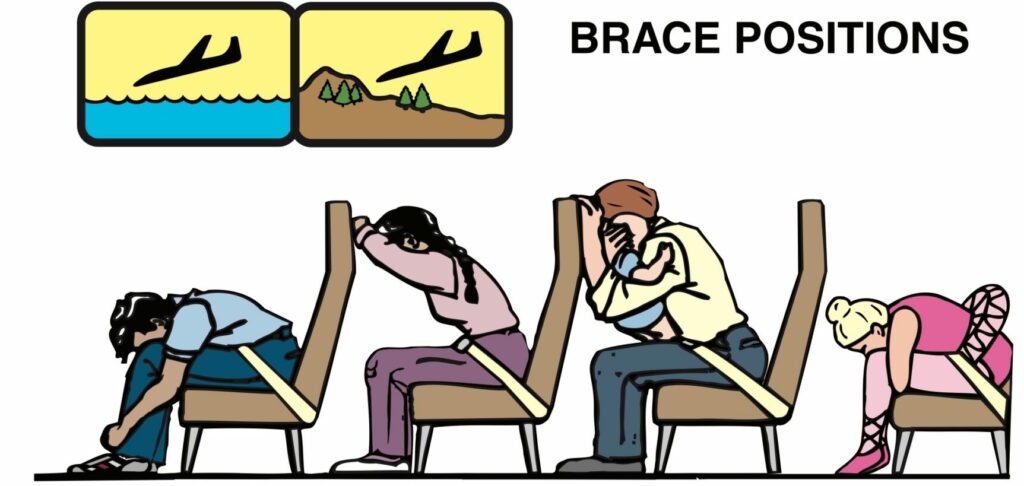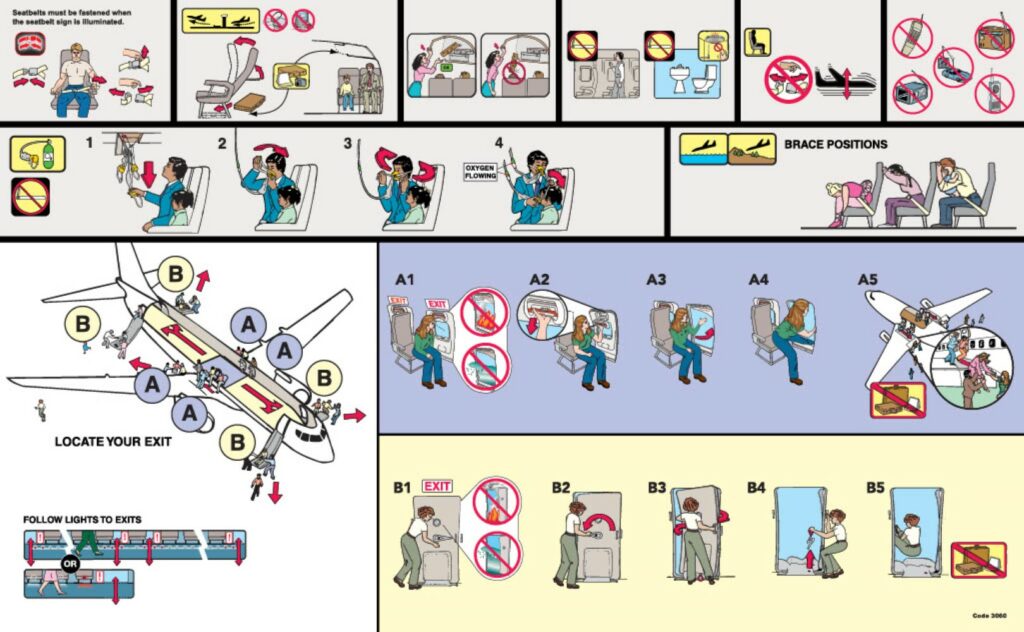Aviation geeks collect, buy & sell, and trade them. Aviation museums conserve them. Bored kids on planes play with them.
But although they are required to be in every seatback pocket on every airplane, few passengers take the time to read the passenger safety briefing card. And, like ignoring the airline safety video, not taking a few moments to read the seatback safety card can be a big mistake.
That’s because those cards contain important information on everything from the exact location of the exits to instructions on how to open the emergency exit doors for the specific aircraft you are traveling in.
And, as the US Federal Aviation Administration and many other entities have confirmed, “an alert, knowledgeable person has a much better chance of surviving any life- or injury-threatening situation that could occur during passenger-carrying operations in civil aviation.”
Information-rich seatback safety cards have been around for decades, but only became mandated in the US aviation industry in 1977. And while it may seem like all the cards are the same, they vary from carrier to carrier, aircraft to aircraft, and have evolved in graphics and design.
“Many of the earliest versions were booklet-style pamphlets that were all or 90% text,” says Trisha Ferguson, CEO of The Interaction Group. The Olympia, Washington-based firm has been around for more than 50 years and has designed and printed inflight safety information cards for more than 600 airlines.
In those early versions, Ferguson says the text for the safety information usually came from airlines and ended up as multi-page documents with lots of information. “The content was unfamiliar to the average passenger. And many of the phrases, words, and terminology were only understood if you were an industry professional.”

Safety information card from United Airlines for the Douglas DC-6 and DC-4 in 1953. Pamphlet titled “The Egress … or a short story about emergency landings.” Image: SFO Museum
The approach began to change in the late 1960s, when Daniel Johnson and Beau Altman, two psychologists with expertise in human factors and ergonomics working for the Douglas Aircraft Corporation, started looking at incidents and accidents for aircraft crashes.
“They discovered that in all accidents where there was loss of life, most people were surviving impact but that the loss of life happened when passengers were trying to get out of the aircraft,” explains Ferguson. Johnson and Altman proposed safety cards with less text and more illustrations to better educate passengers on how the exit doors, exit locations, rafts, and other aircraft emergency features worked.
“They knew that would help the survivability rate skyrocket,” notes The Interaction Group chief executive.
Johnson and Altman left Douglas Aircraft to form their own company to make safety cards for a variety of carriers. And now the company offers a handful of ‘house’ designs as well as custom designs to clients along with full printing services. “What we find is that most carriers choose the style that matches their branding guidelines,” says Ferguson.
Over the years, much has changed in the look of the illustrations in terms of style and culture. “In the early 1970s you saw lots of oranges and yellows. You saw very few women wearing pants. And the hairstyles were reflective of the time,” says Ferguson. She says there was also a season when the 3D illustrated style was popular and some creative ways airlines tried to get passengers to pay more attention to the cards.
“One of my favorites was Sun Country Airlines,” confides Ferguson. “We hid seven different characters in the illustrations, including a construction worker, a gentleman in tuxedo, and a ballerina. And the crew would tell passengers that if they found all the characters, they’d get a little prize.”
Of course, the real prize hidden in safety information cards is safety.
The Interaction Group and others are exploring ways to deliver the information in digital form via an app, but “in the event of an incident or an accident, time is of the essence and technology may not be available,” notes Ferguson.
“So, I think for many years to come a tangible, immediate safety card will be absolutely necessary.”
Related Articles:














